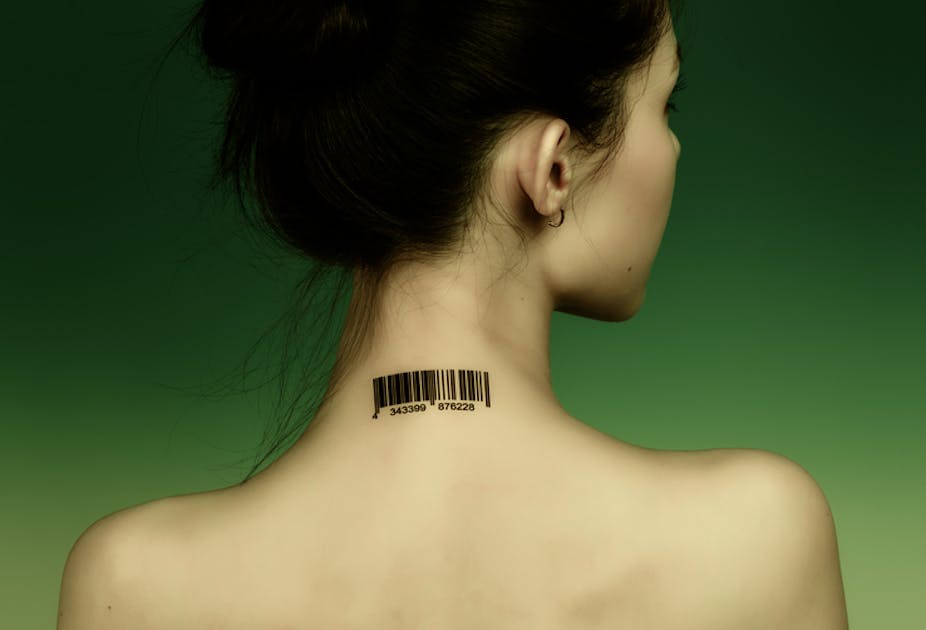Theresa May’s much vaunted Modern Slavery Bill is designed to stamp out what she describes as a “disgusting trade in human beings”, and a new report on trafficking from the National Crime Agency (NCA) has supposedly underlined the urgency of that project.
The NCA tells us that 2,744 “potential victims of human trafficking” were encountered by the authorities in the calendar year 2013, an increase of 22% compared to 2012. But what really grabbed the headlines was the report’s note on traffickers marking “potential victims with tattoos, with various symbols signifying ownership or to show that a victim is over 18”.
This lurid detail, and the “surge” in the number of victims, was eagerly picked up by the press, with papers of all stripes falling over themselves to express their outrage. Even the relatively sober-minded Independent was practically frothing at the mouth:
The victims have been “branded like cattle” - a practice commonly seen worldwide for women in the sex trade – to show that they were aged over 18, the National Crime Agency (NCA) said.
The notion of humans being branded this way for the purposes of commerce is certainly troubling and shocking. But it also stretches the bounds of credibility.
Sense check
There is a huge and growing body of empirical research on sex work around the world, and the tattooing of workers is not one of the practices it systematically documents. Nor does the practice as it’s been reported based on the NCA’s work make much sense outside of sadistic, pornographic fantasy.
If thugs were criminally coercing someone into prostitution, why would they care whether she was 17 or 18 years old? Conversely, if they were supplying women to managers of establishments that would only accept sex workers aged over 18, why would those managers be satisfied by a tattoo, as opposed to identity documents, as evidence of the worker’s age?
Perhaps we’re not really talking about a practice common to the global sex trade in general, but actually about a very marginal phenomenon associated with gangs in specific and limited locations. And if tattooing were actually common practice among those who coerce women into prostitution, victim identification would be a far simpler matter.
In fact, the NCA report speaks only of information that “suggests that victims may be marked,” and admits “the extent to which this is used in the UK is not known”.
Unfortunately, journalists appear to have been so excited by the tattooing story that they neither noted this, nor dug much deeper into other aspects of the report and the hugely complex issues it raises.
Had they done so, they might have observed that the headline figure of 2,744 “encountered” cases is actually whittled down to 1,746 cases considered worthy of being referred into the National Referral Mechanism, and that of those cases, 37% were rejected as not having “reasonable grounds” for a trafficking claim. That leaves 1,095.
How many of those cases will end with official recognition of the person as a Victim of Trafficking is as yet unknown, but in 2012, only 18% of a total of 2,255 “potential victims of trafficking” were positively identified as trafficked. If the same proportion of the report’s headline figure gets through in 2013, we will be talking about just 494 officially acknowledged victims – probably none of whom have been forcibly tattooed.
In harm’s way
May has framed her battle against “modern slavery” as a moral campaign to protect the vulnerable from evil, and the NCA report certainly offers us glimpses of how vulnerable certain groups are in contemporary Britain.
It mentions temporary migrant workers placed in squalid and overpriced accommodation by exploitative employers. It flags up the sex sector as a site in which some workers are exploited and abused. It shows that the homeless and unemployed are sometimes recruited outside job centres or soup kitchens for exploitation in tarmacking and paving work, or offered accommodation and food in exchange for participation in criminal activities.
It also offers yet another reminder that various groups of children, particularly those in local authority care, and unaccompanied asylum seekers, are at critical risk of sexual and other forms of exploitation.
But these very real and serious vulnerabilities do not exist in a vacuum. Workers become vulnerable when they are not unionised, when they’re tied to unscrupulous employers by visas such as those our government issues to domestic workers, or when their workplaces are not properly monitored.
The austerity era has made many of these problems worse: the Gangmasters Licensing Authority, tasked with monitoring gangmaster-controlled work worth £1.34bn to the UK economy, has had its budget cut by 17% between 2011 and 2014, and now employs just 37 investigators to cover all of Britain. Sex workers, meanwhile, become particularly vulnerable when laws surrounding sex work drive them underground (a problem not helped by the highly politicised production of shoddy evidence).
Above all, the vulnerability of the 2,744 people listed in the NCA report, and many thousands more besides, is a product of precisely the kind of draconian immigration and welfare policy that May favours – and a real effort to protect them would require taking an axe to many of the government’s most populist and tough-sounding policies.
But of course, that wouldn’t make for very titillating news.

